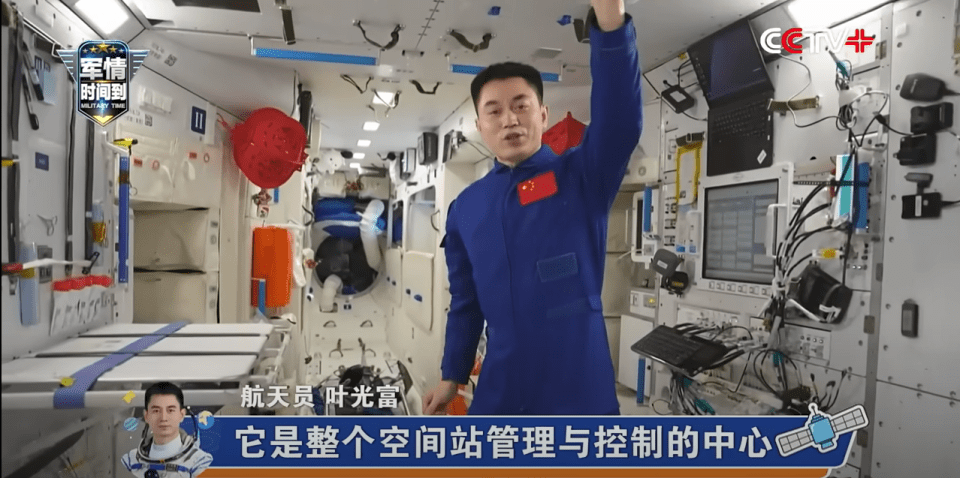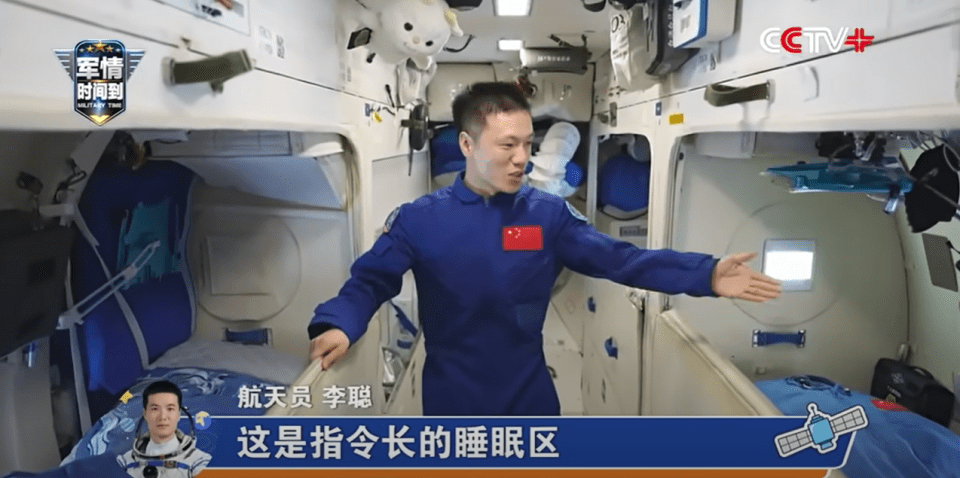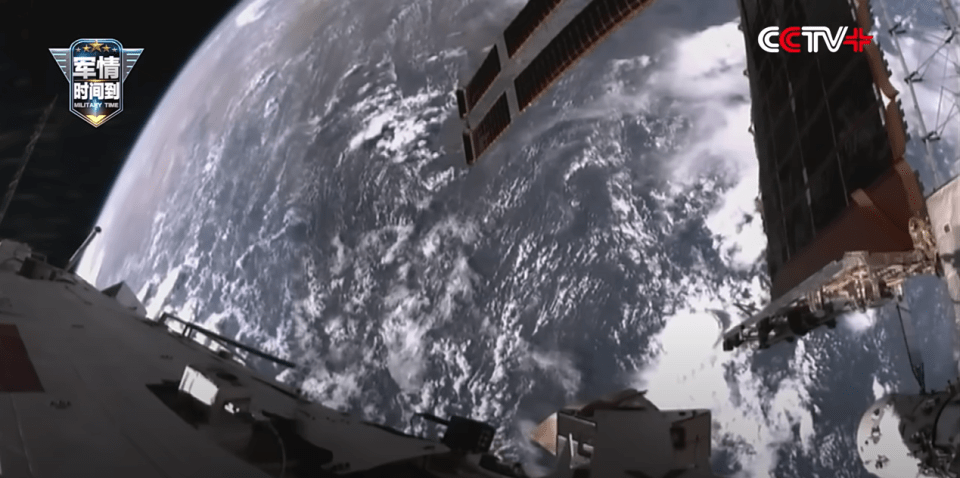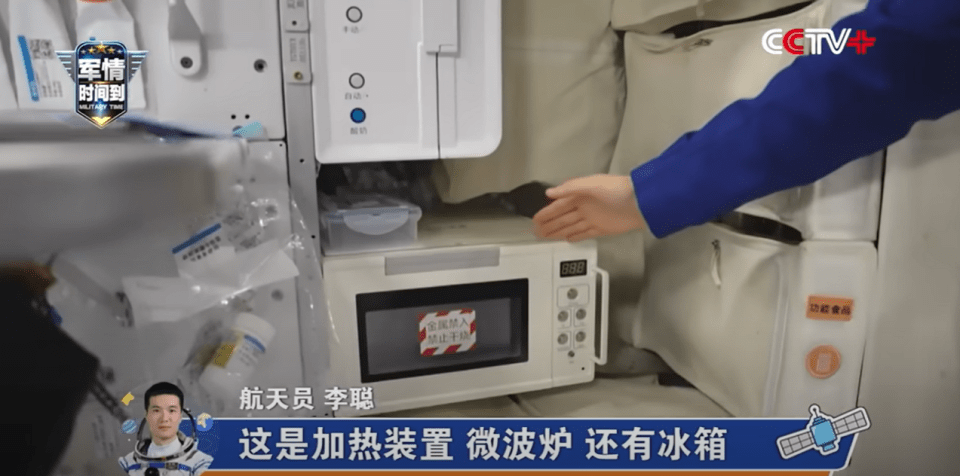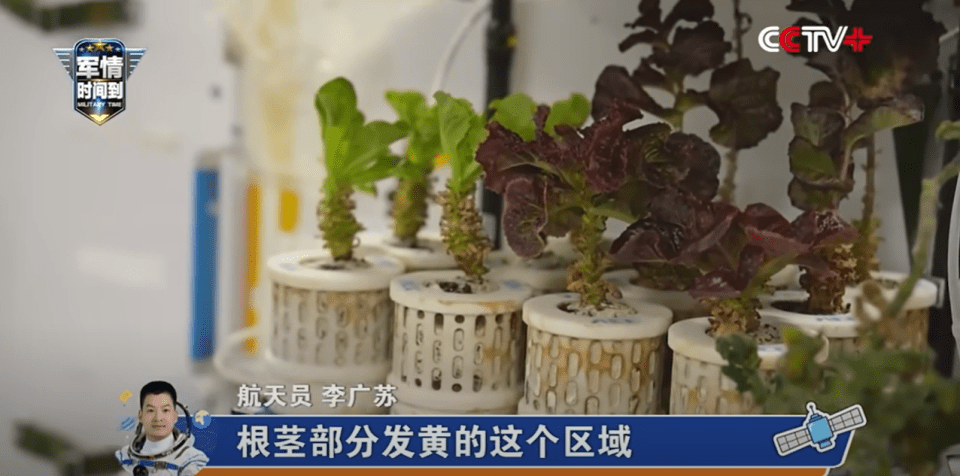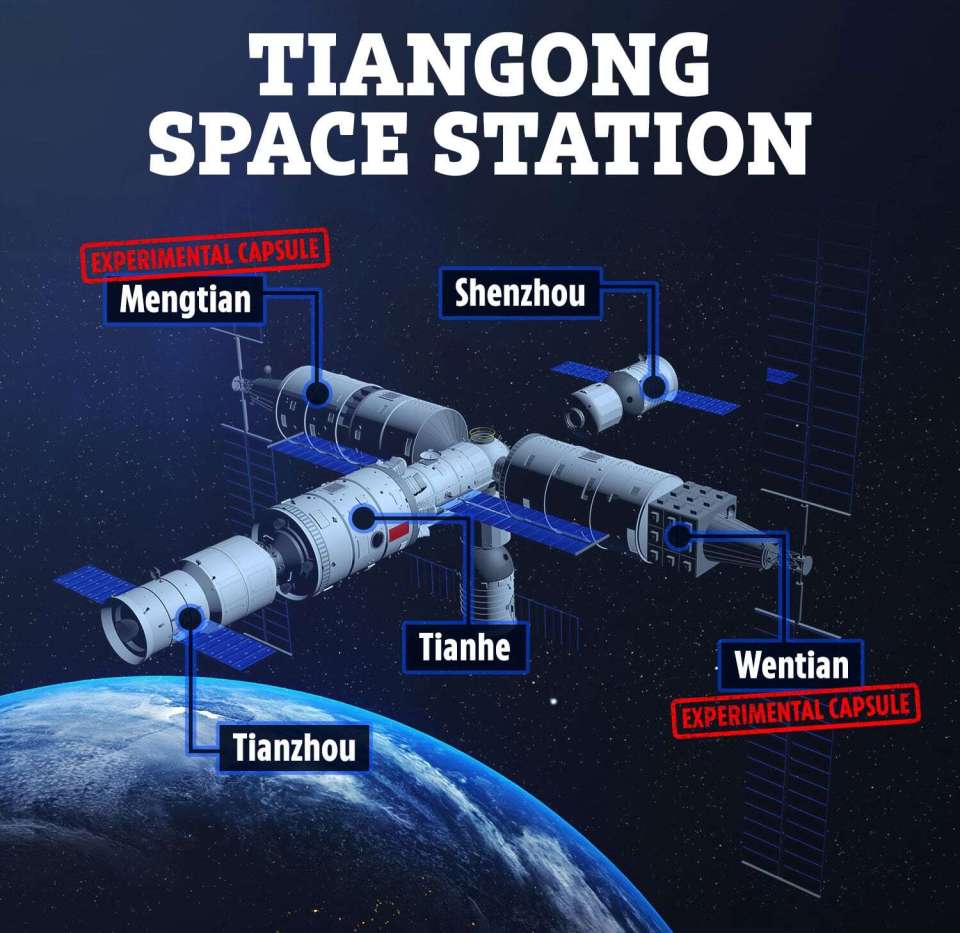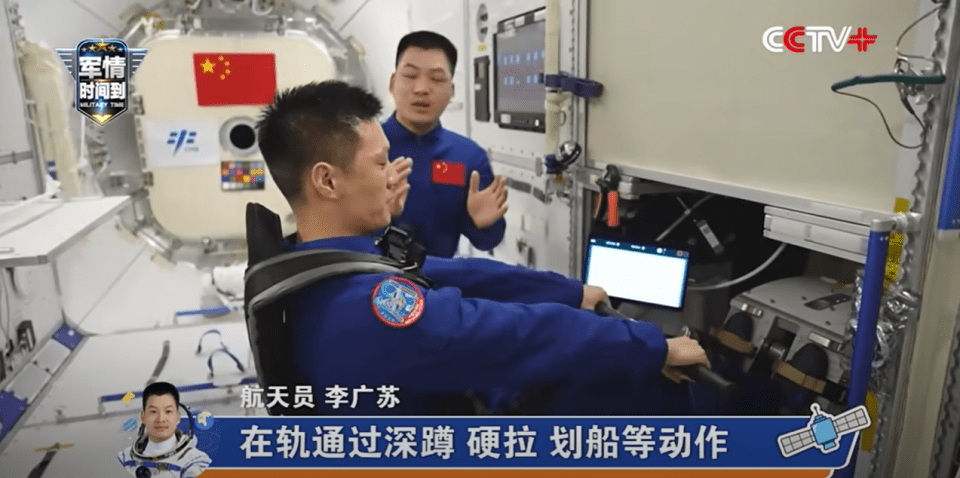CHINESE astronauts have given the first-ever recorded tour of the Tiangong space station, which orbits roughly 400km above Earth.
The orbital outpost is much more luxurious than the International Space Station (ISS), which was launched in 1998.
Decorated with red paper lanterns for the occasion, Shenzhou-18 crew members Ye Guangfu, Li Song, and Li Gangsu gave a seven-minute-long tour of their temporary abode, shared by Chinese state-owned news agency CCTV.
The core module, where astronauts said they spend most of their time, is where the management control centre is stationed.
But it also features some home comforts, like a small dining table, a microwave, fridge and water dispenser.
Here, astronauts enjoy “custom made” food while on their roughly six-month-long stays.
Each astronaut has their own sleeping bunk, which are surprisngly roomy and feature a porthole window for breathtaking views of Earth.
It appears to be a much neater arrangement than on the neighbouring ISS, where astronauts strap themselves to the walls in sleeping bags.
It helps that Tiangong is designed to house no more than three astronauts, whereas the ISS is typically home to seven people at any given time.
The Shenzhou-18 crew, like astronauts aboard the ISS, are there to conduct science.
Tiangong has two orbital lab segments, called Mengtian and Wentian, where astronauts are successfully growing several cherry tomato and lettuce plants.
There are also compartments where astronauts test the affects of microgravity on plants and animals, like the zebrafish.
Astronauts must exercise regularly to avoid the bone density loss, as a result of the microgravity taking the weight off their muscles and bones.
Around 2.5hours of the day, six days a week, is spent exercising while in space.
The Shenzhou-18 crew, who arrived at Tiangong in April, will soon hand over control to new arrivals and prepare for a return to Earth.
Their arrival back home is scheduled for3 November, at the Dongfeng landing area near Jiuquan spaceport.
How does space effect the body?
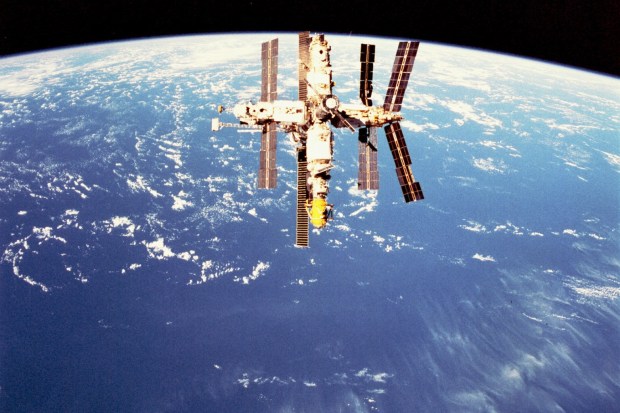
Space takes a significant toll on the human body.
The usual duration of an ISS or Tiangong mission is roughly six months, which can have huge physical impacts, such as:
- Redistribution of fluid around body due to long periods of weightlessness
- Bone density loss in critical areas such as lower limbs and spine
- Muscle atrophy
Humans in space lose between 1 and 1.5 per cent of their mineral bone density.
Although ISS astronauts spend an average of two hours a day exercising, muscle loss is unavoidable in space.
It takes several years to recover from a six-month spaceflight.
There can be ongoing health concerns long after astronauts have returned to Earth, including:
- Higher risk of bone fracture
- Increase in erectile dysfunction
- Cancer risk due to radiation exposure
China finished building Tinagong in November 2022, so it’s no wonder it appears more advanced that the ISS.
In less than two years, China assembled three modules of its space station.
The country was excluded by the US from the ISS, but has invested heavily into its space industry in recent years.
Under President Xi Jinping’s leadership, China spent roughly $14billion (11.2billion) on its ambitious space programme in 2023, according to Statista.
The clip comes as cosmic neighbours aboard the ISS prepare for a potential, urgent evacuation.
Nasa and its Russian counterpart Roscosmos have reported 50 “areas of concern” on the orbital outpost, which include cracks and leaks, one of which has been leaking oxygen since 2019.
The five-year-old leak is present in the Russian service module, adjacent to a hatch, which was installed in 2000.
In a recent report from Nasa’s Office of the Inspector General (OIG), the agency dubbed it a “top safety risk”, escalating the threat rating to five out of five.
Nasa is closely monitoring four cracks and 50 other “areas of concern” on the ISS.
While astronauts can cover the cracks with patches or sealant, these are largely temporary solutions.
Race for the moon
By Millie Turner, Technology & Science Reporter
The ongoing chest pounding between the US and China has sparked a Renaissance for the space race of the 60s.
And Nasa boss Bill Nelson hasn’t shied away from calling it a “race”, either.
Both nations are taking their Earth-bound tech war – where the pair are currently caught fist shaking over computer chips, AI and TikTok – to the stars.
While China was late to the first round of the space race, Beijing is investing heavily in becoming the second nation to put humans on the Moon by 2030.
Washington and Beijing currently have the most developed plans for securing separate permanent bases on the Moon, out of any other country in the world.
But the White House and Nasa are gunning to be the first ones there.
In January, Nelson said he believed the “race” was over for China, and that the US was heading towards its home straight.
Nelson has been outspoken of his fears should China pit them to the post.
China’s military presence in the South China Sea signals how the country might behave on the lunar surface, Nelson claimed, which would breach the 1967 Outer Space Treaty.
